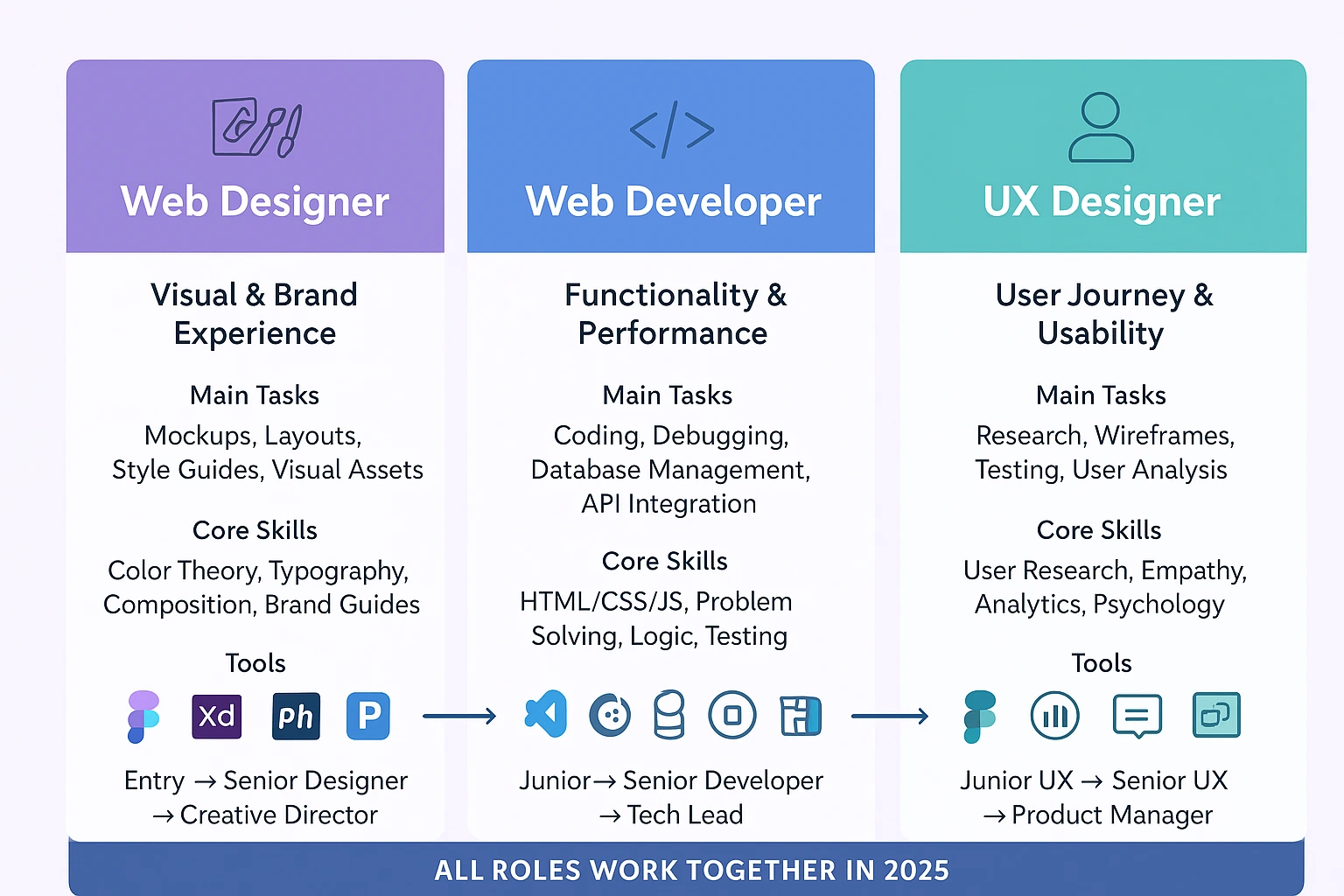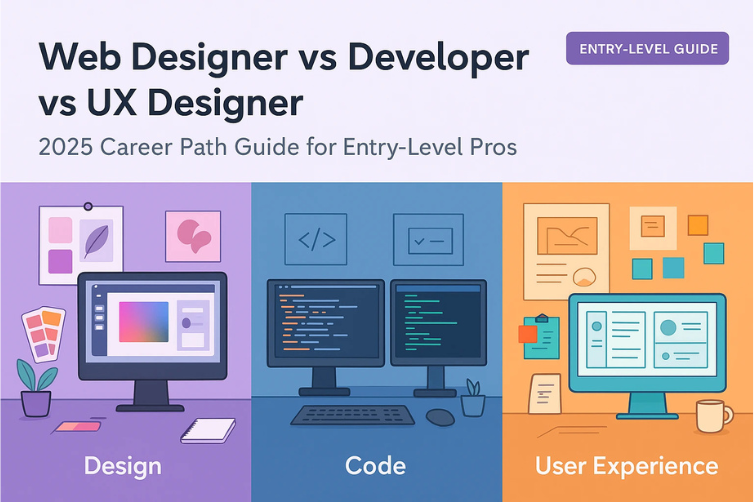Starting your career in web technology can feel overwhelming because the industry offers multiple paths, each with its own focus. You might wonder:“Should I become a web designer, a web developer, or a UX designer?”
Although these roles often overlap on projects, they each demand unique skills, tools, and ways of thinking. For an entry-level professional, knowing the differences is essential. By understanding the day-to-day work, the software you’ll rely on, and how career growth unfolds, you can make informed decisions and set a solid foundation for your journey.
Role Breakdown
Web Designer: Crafting Visual Experiences
As a web designer, your mission is to create visually engaging and intuitive layouts that align with a brand’s identity. You focus on how a website looks and feels, ensuring a cohesive user experience.
-
Master tools like Figma, Adobe XD, or Photoshop to build layouts and assets.
-
Translate brand vision into responsive, screen-based designs.
-
Collaborate with UI and front-end developers to maintain visual consistency.
Web Developer: Building Functional, Interactive Sites
Web developers turn design ideas into working websites using code. Whether you work on the front-end, back-end, or full-stack, your role is to make sure the site works correctly, loads fast, and stays secure.
-
Write HTML, CSS, and JavaScript for layout and interactivity.
-
Manage back-end logic, databases, and APIs to support features.
-
Troubleshoot bugs, improve performance, and ensure cross-browser compatibility.
UX Designer: Designing for User Experience
UX designers focus on how users interact with a product. Your goal is to make the experience smooth, enjoyable, and intuitive through research and testing.
-
Conduct user research, create personas, and map user journeys.
-
Build wireframes and prototypes to test ideas early.
-
Analyze data and feedback to continuously improve usability.

Day-to-Day Tasks & Tools
| Role | Daily Tasks | Common Tools / Skills |
|---|---|---|
| Web Designer | Design mockups, visual layout, style guides | Figma, Photoshop, Adobe XD, color theory |
| Web Developer | Code interactive features, debug, ensure performance | HTML, CSS, JavaScript, Git, Node.js, SQL |
| UX Designer | Research users, wireframe, conduct usability tests | Figma, wireframing tools, analytics platforms |
Career Growth
The web industry offers dynamic and flexible career paths, with plenty of room to grow.
-
Start focused → Master fundamentals in design, development, or UX to build confidence.
-
Expand your skills → Designers can learn basic coding, Developers can study UX principles, and UX Designers can explore UI or prototyping.
-
Level up → Move from junior to mid-level or senior roles, specializing in areas like front-end frameworks, interaction design, or product UX.
Think big → Aim for leadership positions such as Product Designer, Team Lead, or even Chief Web Officer—requiring cross-disciplinary expertise.
Conclusion
For an entry-level professional in 2025, understanding these roles helps you choose a path that aligns with your strengths and interests:
-
Web Designers shape how sites look and feel.
-
Web Developers bring interactivity and functionality to life.
-
UX Designers ensure a seamless, user-first experience.
Choose based on what excites you—visual creativity, technical problem-solving, or user empathy—and start building and learning from there.





